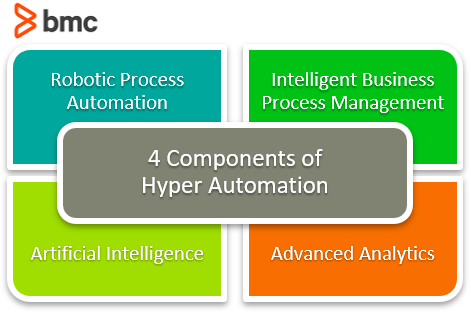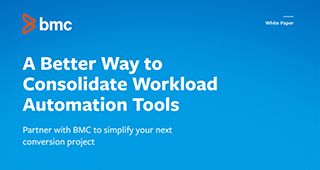For a long time, automation was secluded to the world of IT professionals. It required complex coding skills, buzzwords, and a substantial platform to support it. However, the rise of low-code tools and robotic process automation has changed the IT automation paradigm and opened it up to business users and non-coders.
As a result, 2022 promises to be the most exciting year for IT automation, and its use cases continue to multiply. Forrester referred to automation in 2022 as “the new fabric of digital business” as it has increasingly taken center stage to enhance traditional business processes. As companies embrace digital transformation, automation continues to be a critical key to success.
Here are some of the automation trends to look out for in 2022 and how it will continue to shape the world of business:
A rise in hyperautomation
Most experts dismissed the rise of remote work in 2020 as a temporary shift to handle an acute state of emergency. However, two years later, many employees are still working from home, and even more are juggling a hybrid office.
With this shift in the work environment, automation has merged many segments to account for these changes. Robotic process automation (RPA), process mining, chatbots, low-code workflow platforms, artificial intelligence, machine learning, and intelligent document processing are increasingly merging to create a more unified experience.
Experts are referring to this blurring together as hyperautomation. It requires a more disciplined approach for enterprises to quickly identify, vet, and automate as many of their processes as possible. Hyperautomation is a rapidly growing trend: Gartner expects that the hyperautomation market will expand to nearly $600 billion by the end of the year.
2022 will see leaders increasing step away from segmented automation and view it as pieces to a puzzle that can be put together to improve the organization at the same time.

Cloud-based architectural innovation that increases flexibility
When looking forward to the next step of automation, many of us explore the exciting new technologies and their use cases. However, delivery is just as crucial to how successful these new solutions are.
Flexibility in delivery is a critical factor that organizations have to make when purchasing a platform. Organizations are increasingly demanding more flexibility that will enable them to avoid lock-in to any one delivery model.
As a result of this changing market demand, many automation companies are building platforms that can change from software as a service (SaaS) to an on-premises solution with very little disruption. Low-friction transitions to delivery modes will increasingly become the norm in 2022.
Automation companies are now utilizing cloud-native architectures that enable them to harness the flexibility of containerization and microservices. With these technologies, companies can provide the same functionalities no matter how the customer wants to run their platform.
This improvement in delivery means that users won’t have to acquire fundamentally new skills or environments if they decide on a different delivery mode later. Plus, customers that leverage on-prem solutions will have more flexibility, timeliness, and an easier time updating and expanding their installations.
Innovations in 2022 will likely include how solutions are packaged. They will be easier to install, manage, and upgrade and won’t require a steep learning curve.
New automation champion: Chief Sustainability Officer
The role of Chief Sustainability Officer (CSO) is relatively new to the C-suite, but it is exploding in popularity. Consumers are more concerned about the environment, and climate change, so many corporations are bringing on CSOs to help them become environmentally friendly. Researchers found that the number of CSO roles among Fortune 500 companies has grown 228% over the last decade.
As CSOs find more creative ways to lower their organization’s carbon footprint, automation is increasingly becoming one of their tools of choice. It is a powerful solution to reducing the waste that both hurts sustainability and affects their bottom line. For example, data centers are a significant expense: they account for 3.7% of total carbon emissions and 40% of the typical company’s overall electricity. However, automation can power down data centers when they are not needed to reduce both significantly.
In 2022, the CSO will increasingly become the champion of automation efforts. They will be able to leverage their technology to increase efficiency and reduce waste.
Reimagining processes to increase employee productivity
The typical worker must toggle through various tools to get their work done for nearly every task. Today, the average corporation has over 170 different applications its employees use. While adding tools and technology has long appeared to help produce productivity, many leaders now realize that too much technology results in low-value work that zaps both productivity and overall work engagement. Employees spend much of their day inputting data and running programs instead of the high-value and innovative work that improves the organization.
Many organizations are turning to automation in 2022 to provide employees with the assistance they need to relieve these tedious and low-value jobs. More leading organizations leverage automation to give workers digital desktop assistance that will add a layer between employees and the enterprise applications they utilize to get their work done.
Through automation tools, such as RPA, employees will no longer have to handle tasks such as inputting or transferring data or closing out programs. With reusability, standardization, centralized management, and governance, companies will reimagine their processes to be more rewarding for workers and productive for the organization.
Automation will address the labor shortage
2021 saw many restaurant employees and other hospitality workers leaving their jobs in droves. Businesses struggle to find employees to fill in the high-stress and fast-paced hospitality work environment. Forrester predicts that 35% of service companies will utilize physical robot workers to fill this gap in 2022. Robotics can now fill these employment gaps by offering delivery, food preparation, grounds maintenance, warehouse jobs, and customer service.
This shift to address the labor shortage will likely dramatically change the landscape of low-end service workers.
Improving customer experience through employee experience
The employee and customer experiences have always been correlated, but many companies are starting to realize how necessary the employee experience is. One 2021 survey of C-suite executives and leadership showed that 85% agreed that employee experience affected the overall customer experience.
Employee engagement is a critical factor in overall enterprise productivity and the customer experience, yet 2021 saw engagement levels drop for the first time in a decade. Companies need to increase their focus on the basics to help improve overall satisfaction and engagement on the job. 2022 will see companies concentrate on improving their overall employee experience through automation.
Automation helps take the tedious and repetitive jobs so that employees can spend more time in the high-value activities that are more fulfilling, such as providing superior service to customers. In addition, automation enables employees to deliver seamless and personalized interactions that translate to a better customer experience.
In 2022, technology for speed or a better bottom-line is no longer enough. Instead, automation must make an effortless experience for both employees and customers.
The challenge of digital transformation
Finally, it’s essential to understand that digital transformation is complex. While technology adoption is inevitable, it doesn’t always translate into transformed business processes. The latter requires ongoing improvements across various domains: talent acquisition, workforce culture, business requirements, and the market landscape, among others.
Organizations successful at digital transformation align their initiatives of adopting digital technologies with the business value of automating IT processes and operations.
Of course, improving your company doesn’t stop with DX. Empowered by digital transformation, organizations can be on their A-game and evolve to become an Autonomous Digital Enterprise, a forward-looking vision of the future state of business that embraces intelligent, tech-enabled systems across every facet of the company to thrive during seismic changes.







